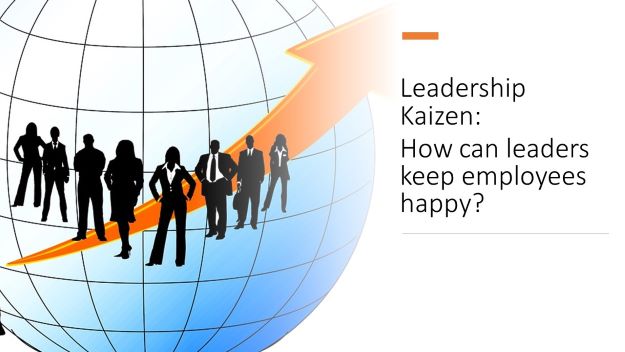Employee morale is one of the key ingredients of business success, thus it cannot be overlooked. So, the glaring question here is- How can leaders keep employees happy?
I would say that it is a three-part process, namely:
- Calibrate expectations.
- Personalize experience.
- Shape memories.
Calibrate expectations-
Organizations should be clear about what it can and cannot deliver given their available resources and priorities, which will change as the economy ebbs and flows.
Once this map is ready, HR leaders should involve employees in creating a topography thru a survey about what changes they would like to implement and what makes them excited to come to work.
I would recommend using Personal Kaizen (or Employee Kaizen) tool to create an ‘experience blueprint’. You may combine Kaizen with day- long workshops designed to help employees determine and document their priorities. Use these blueprints for employee engagement.
Next, Managers should engage in one-on-one dialogue with workforce to align each employee’s aspiration with organization’s vision.
On the face of it, this exercise may look lengthy and cumbersome, but it is not. Calibrating employee expectations with organizational expectations is a sure win-win approach to go for.
Personalize day-to-day experience:
Employees might fear repercussion from voicing their requests or objections if any, so leaders need to create a psychologically safe environment for discussions. Encourage transparent, often and intellectual dialogues between leaders and employees. Scrap-off ‘Do as I say’ work code (that is, if it still exists at your workplace) .
Shape memories:
This involves shaping memories both good and bad. HR leaders can ask employees to reflect on how the employee development programs have improved their work lives. Encourage them to post their stories on company blog, newsletter, and share them at team meetings, open-house gatherings, off-site boot camps and other forums.
As companies emerge from the current economic crisis leaders might seek ways to highlight examples of how they supported their employees, such as- by continuing to pay sidelined workers or providing extended sick leave.
Of all the times, today’s business leaders and decision-makers must exhibit high emotional maturity, empathy and tolerance.
Installing a culture of Leadership Kaizen at your workplace creates successful leaders, motivated workforce and a thriving business.
Checkout how can Kaizen be used effectively in Life Sciences and allied industry...
Related Reading-
#ContinuousImprovement #Kaizen #RemoteWorking #ProcessDesign #LeadershipKaizen #EmployeeEngagement





















